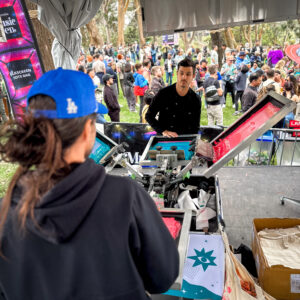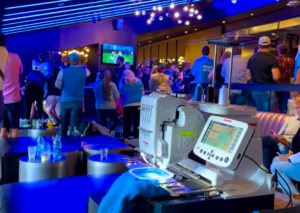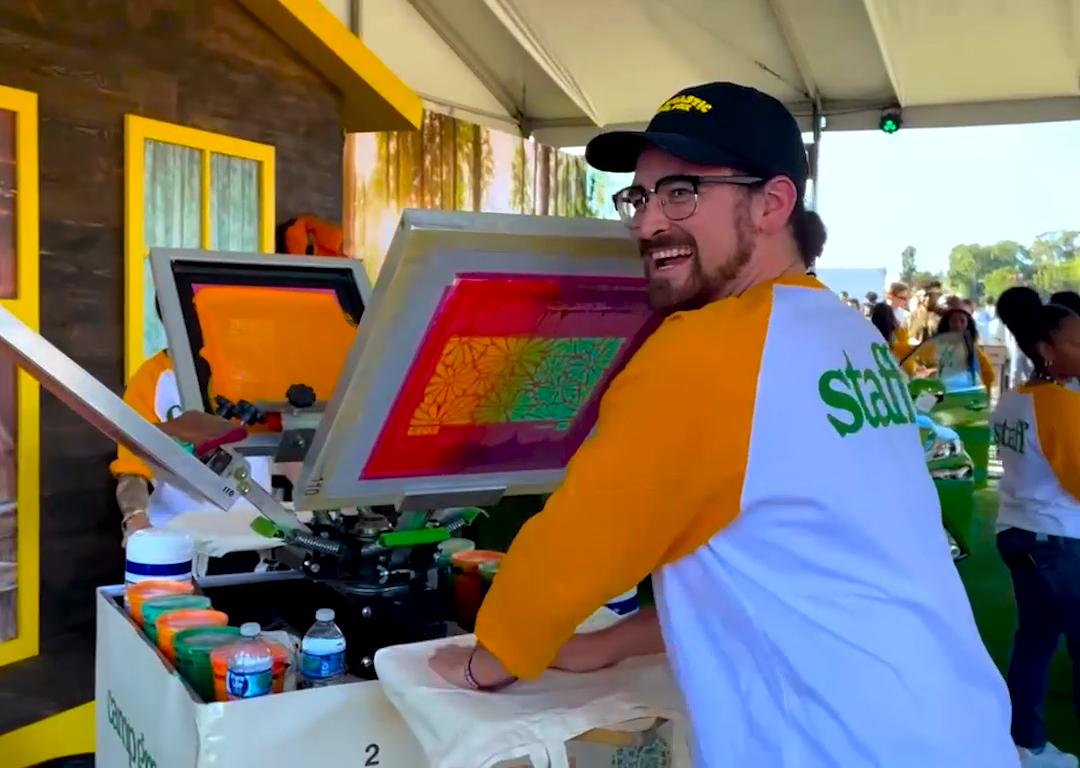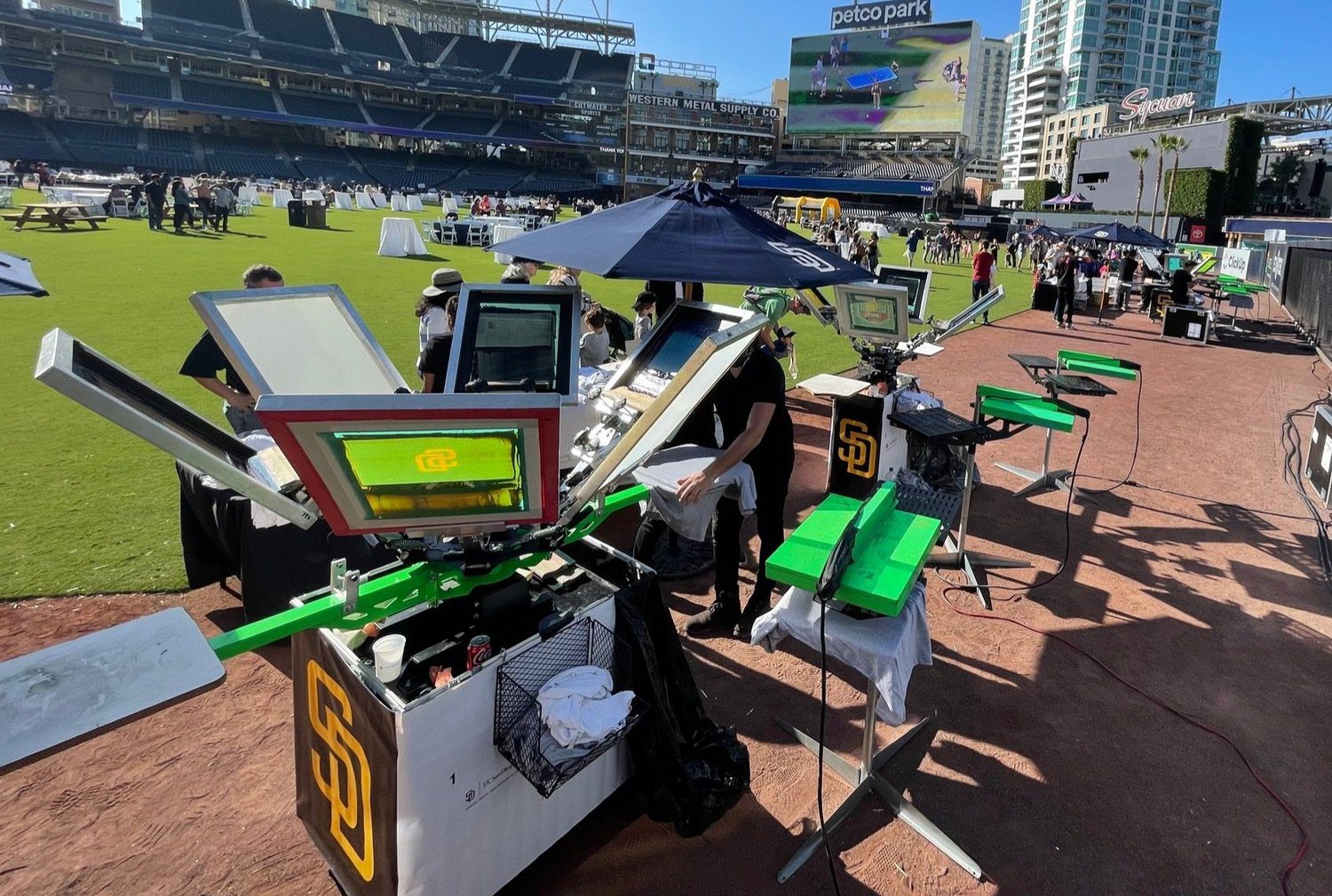Imagine standing amidst the vibrant energy of a bustling event, where on-site merchandising isn’t just a transaction, but an integral part of the experience. This is the new reality of modern events – a world where creative merch booths are not mere afterthoughts but dynamic hubs of engagement and personalization. Here, every piece of merchandise, from bespoke T-shirts to customized posters, goes beyond being a simple memento. They are keys unlocking deeper connections between brands and attendees, turning ordinary events into memorable, profit-turning experiences. So, let’s step into this innovative landscape and explore how these merchandising marvels are redefining the event experience.
The Importance of On-Site Merchandising in Today’s Event Industry

The event industry is continuously evolving, adapting to new technologies and attendee expectations. In this fast-paced environment, on-site merchandising emerges as a pivotal element for success. It’s not just about selling products; it’s an art of enhancing the overall event experience. This shift is closely tied with the rise of experiential marketing, where the focus is on creating memorable experiences rather than mere transactions. Additionally, advancements in event merch printing technology have opened up new avenues for engaging attendees and driving sales.
Exploring On-Site Merch Printing: A Game Changer

One of the most exciting developments in event marketing is the advent of on-site merch printing technology. This innovation allows for immediate, customized printing of merchandise at events. Imagine attendees being able to order and receive personalized merchandise in real-time—this not only creates a unique experience but also encourages impulse purchases. The keyword here is “on-site merch printing,” a technique that is rapidly changing the game in event merchandising.
Customization: The Key to Memorable Merch
Customization is the heart of memorable merchandising. It allows attendees to create a personal connection with the event and its theme. From custom t-shirts to personalized souvenirs, merch customization can significantly enhance attendee engagement. Incorporating keywords like merch customization and event merch personalization into your strategy, event organizers can provide unique experiences that resonate long after the event concludes.
Personalizing Event Merchandise: Connecting Brands and Attendees
Personalization goes beyond mere customization—it’s about creating a deep connection between the brand and the attendee. By offering personalized merchandise, you’re not just selling a product; you’re providing a piece of the event that attendees can take home with them. This strategy, part of broader experiential marketing tactics delving deeper to forge an emotional and memorable connection between the brand and the attendee.
Personalization in merchandising is about understanding and catering to the unique preferences and desires of each attendee. It’s the art of making each piece of merchandise feel like it was crafted specifically for the individual, turning every item into a tangible representation of their unique experience at the event. When attendees feel that a brand has taken the time to understand and value their individuality, the emotional impact is profound. This deepens their engagement with the brand, often turning them into loyal advocates.
Moreover, this personalized approach is a key component of experiential marketing, a strategy that focuses on creating immersive experiences. By integrating personalization into your merchandising, you’re not just offering a product; you’re enhancing the overall event experience. Attendees don’t just walk away with a custom product; they carry a story, a memory that resonates with them long after the event has concluded.
In practice, personalization can take many forms, from engraving names on products to offering a range of designs that attendees can choose from to reflect their style. Technology plays a crucial role here, with advanced printing techniques, digital interfaces for custom orders, and even augmented reality experiences allowing for on-the-spot personalization.
Furthermore, this strategy also offers valuable insights into customer preferences and behavior, enabling brands to tailor future offerings and marketing strategies more effectively. The data gathered from personalized merchandise choices can inform future product development, marketing campaigns, and even event planning.
Implementing Innovative Tactics at Your Event

Adopting these innovative merchandising tactics requires careful planning and consideration of factors such as budget, audience demographics, and event size. Start small, perhaps with a pilot project, and gather feedback to refine your approach. Remember, the goal is to create an immersive experience that aligns with your brand and event theme.
Budget Considerations
First and foremost, budget plays a crucial role. Innovative merchandising, especially when it involves technology like on-site printing or digital customization tools, requires a financial investment. Careful budgeting must be done to balance the costs of implementing these tactics with the expected ROI. It’s essential to analyze the potential revenue from merchandise sales against the expenses involved in setting up the necessary infrastructure. This financial planning ensures that the introduction of these new elements does not adversely impact the overall budget of the event.
Understanding Your Audience
Equally important is a deep understanding of your audience demographics. The preferences, interests, and behaviors of your attendees should guide the type of merchandise and the level of personalization you offer. For instance, a tech conference audience might appreciate more digitally-advanced customization options, whereas a music festival crowd might prefer unique, visually appealing designs for on-site printed T-shirts. Audience analysis helps in tailoring the merchandising experience to meet the expectations and enhance the satisfaction of your attendees.
Considering Event Size
The size and scale of the event also dictate the implementation of merchandising strategies. For large-scale events, the logistics of on-site merchandising – such as the number of printing stations required, staffing needs, and inventory management – need careful planning. For smaller events, a more intimate and detailed approach to personalization might be feasible. Understanding the scale helps in optimizing resources and ensuring that the merchandising does not become overwhelming or underwhelming for the attendees.
Creating an Immersive Experience
At the core of these efforts is the goal to create an immersive experience that resonates with the event’s theme and aligns with your brand’s ethos. Innovative merchandising should not feel like an add-on but an integral part of the event, enhancing the overall theme and contributing to the story you want to tell. Whether it’s through customized products that reflect the event’s theme or interactive merchandising experiences that engage attendees, the focus should always be on creating a cohesive and memorable experience.





